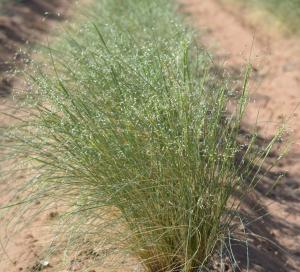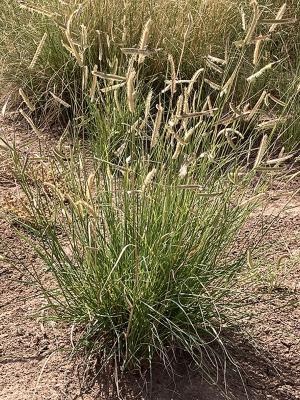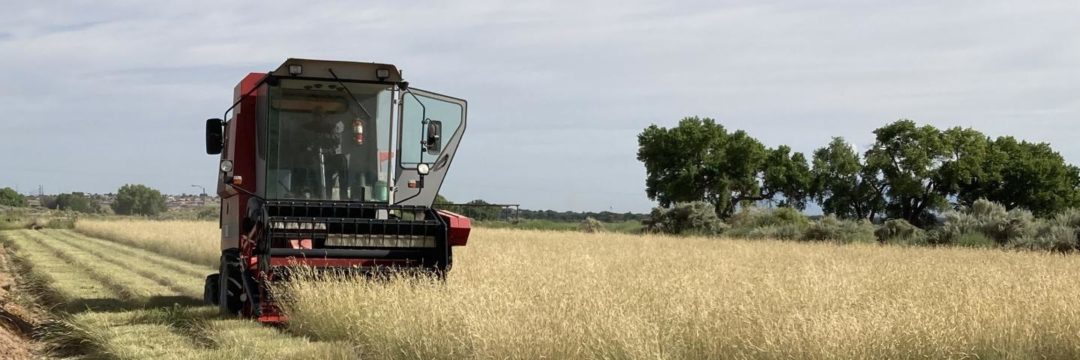Native grasses in the Southwest are predominantly perennial grasses adapted to high temperature and low moisture environments. While most cool-season native grasses are found in areas of high elevation that receive higher precipitation, warm-season native grasses grow mainly in warmer and drier areas at lower elevations. Both warm- and cool season native grasses provide benefits that are vital to the Southwest desert ecosystems such as lowering soil surface temperature, reducing soil erosion, decreasing soil compaction and improving water infiltration.

Paloma Indian ricegrass, Los Lunas PMC
Because of their physiological adaption to drought and poor soil environments, native grasses are effective conservation tools for soil erosion control, stabilization of roadsides, disturbed areas, and steep slope sites, and reclamation of abandoned cropland. They also provide food sources and habitat for wildlife and high-quality forage for livestock. In recent years, forage producers in the Southwest have converted part of their irrigated pasture to native grass pasture due to drier weather and less irrigation water availability. Native grasses grow well in the areas of their natural adaption with minimum inputs of water, fertilizers, and pesticides.
Several improved native grass cultivars and pre-varietal germplasms were evaluated for better performance and ecological adaptation and have been released by Plant Materials Centers and collaborators to meet conservation needs. For example, ‘Loetta’ Arizona cottontop, Pima Germplasm Pima pappusgrass, and Cochise Germplasm spike dropseed are among the species that have been used for restoration of abandoned cropland. Others like Vegas Germplasm and ‘Salado’ alkali sacaton, ‘Hachita’ and ‘Alma’ blue grama, Tusas Germplasm bottlebrush squirreltail, ‘Viva’ galleta, ‘Windbreaker’ giant sacaton, and many more are commonly used for rangeland revegetation, erosion control, improving wildlife habitat, disturbed land restoration, xeriscaping, and low maintenance recreation areas. Some of these native grass cultivars were released over 50 years ago, but are still used by farmers, ranchers, and conservation planners in the Southwest.

Hachita blue grama, Los Lunas PMC
Basic guidelines for seeding native grasses in the arid regions are provided in these publications: Seeding Native Grasses in the Arid Southwest and The Basics of Seeding Native Grasses in Arid Ecoregions. For more information on the Southwest native grasses, contact the Plant Materials Centers located in Arizona, California, New Mexico, Nevada or nearest Regional Plant Materials Specialists.
Technical information and guidance on the use of conservation plants to address resource concerns are available on the Plant Materials Program website. For additional information on specific plant species, please see the USDA PLANTS database.







Post a comment
Report Abusive Comment